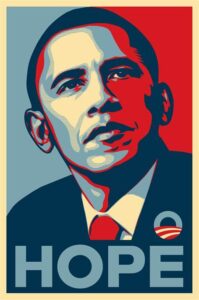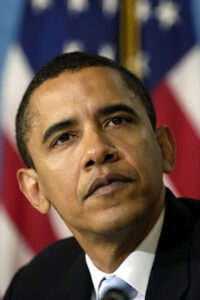2a. In the majority of all writing intensive courses, we are to submit multiple papers that include referenced photos. If we went to museums, we had to identify the artist, the art piece, the date and location where it was created under a photo of the art work. You can also put a link to what site the photo was found on. There was an assignment where we had to take lines from an existing poem that meant something to us and create it in a way that would impact people. I recreated a piece of art using the same exact layout of an original Dada art piece. I gave credit to the art piece by stating in the written portion that I used that piece of art as inspiration to create mine. Now thinking back, I do not feel like I did much to change it and call it mine. I just changed the words that were used within it. I do not think it displayed the right to be used. Therefore, I could probably get in some sort of trouble if I decide to post it anywhere.

Shepard Fairey, Hope Poster, 2008. An Idealized red, white and blue portrait of Barak Obama with the word hope in the bottom. Utilized for presidential candidacy.

(B28) Senator Barak Obama, D-Ill., listens to academy awarding-winning actor George Clooney speaking to the media at the National Press Club in Washignton Thursday, April 27, 2006, to call attention to the critical situation in the Darfur region of Sudan. (AP Photo/Mannie Garcia)
2b. While reading, I felt that Faiery’s transformation was enough to make a difference to differentiate between the hope poster and the Garcia Obama Photo. I agreed that it was unprofessional, after finding out the photographer of the Obama photo, to not reach out or give credit where it was due. Also, not paying for any licensing fees on that photo. I was surprised with the outcome of the Fairey copyright case. I would have thought one side would have won the case but instead they came to an agreement/ settlement that benefits both parties. I agree with the party’s decisions and thought it was clever to collaborate with one another.



